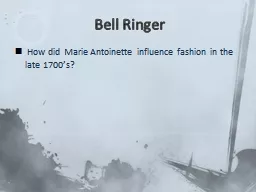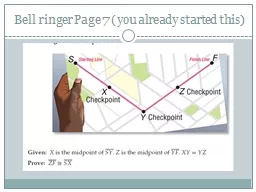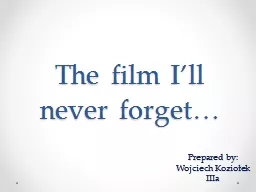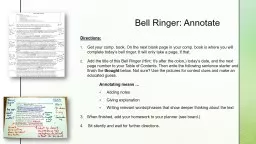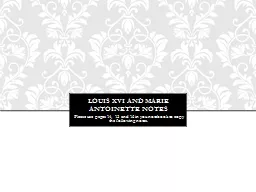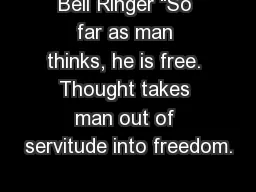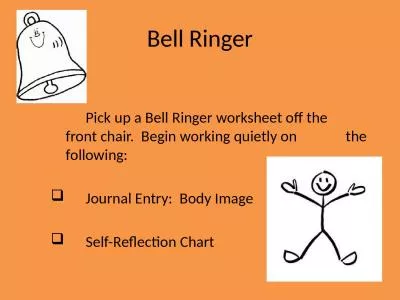PPT-Bell Ringer How did Marie Antoinette influence fashion in the late 1700’s?
Author : phoebe-click | Published Date : 2018-03-20
Bell Ringer Answer Used papiermâché paste to white and stiffen her hair to extreme heights High headdresses plumes and voluminous dresses Agenda Bell Ringer
Presentation Embed Code
Download Presentation
Download Presentation The PPT/PDF document "Bell Ringer How did Marie Antoinette ..." is the property of its rightful owner. Permission is granted to download and print the materials on this website for personal, non-commercial use only, and to display it on your personal computer provided you do not modify the materials and that you retain all copyright notices contained in the materials. By downloading content from our website, you accept the terms of this agreement.
Bell Ringer How did Marie Antoinette influence fashion in the late 1700’s?: Transcript
Download Rules Of Document
"Bell Ringer How did Marie Antoinette influence fashion in the late 1700’s?"The content belongs to its owner. You may download and print it for personal use, without modification, and keep all copyright notices. By downloading, you agree to these terms.
Related Documents

